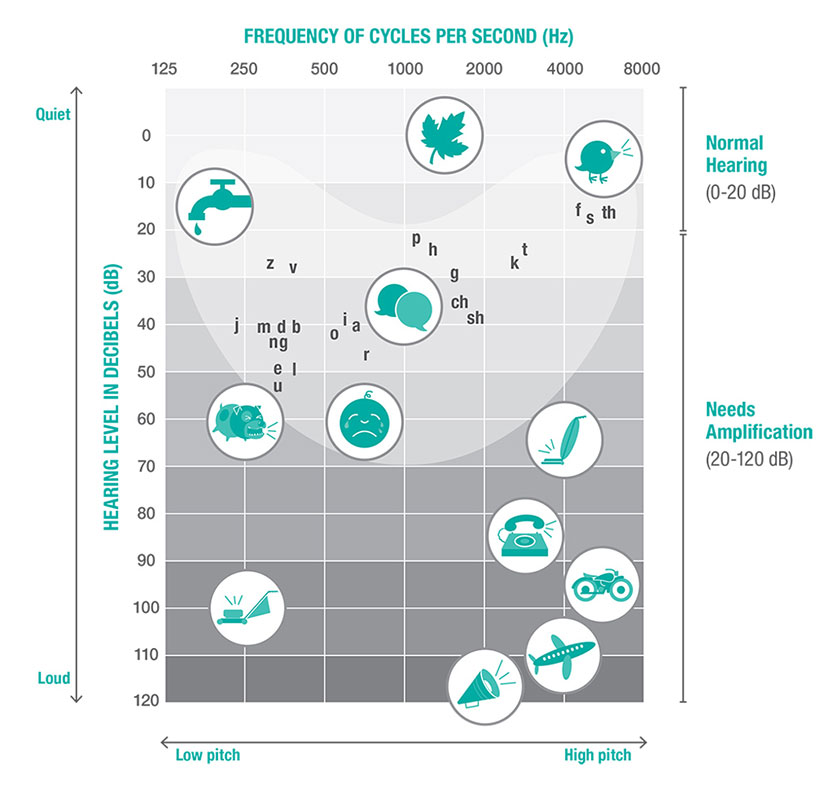Audiogram
The audiogram is the graph or visual representation of a persons’ hearing. The vertical lines on an audiogram represent pitch or frequency. Low pitches are on the left and high pitches are on the right, similar to the keys on a piano.
The horizontal lines represent the loudness or intensity of a sound measured in decibels (dB). The softest sounds are towards the top of the graph and the loudest sounds are towards the bottom. Red circles represent the right ear and blue Xs represent the left ear. Sometimes the symbols may be triangles for the right, squares for the left, and Ss for soundfield (without headphones).
A vibrator may also be placed behind the ear and the person’s hearing is tested. This device bypasses the outer and middle ear and measures the hearing nerve directly. Brackets represent those responses.
Each picture represents the approximate loudness and pitch of that object. The banana-shaped area represents the typical range of conversational speech.
Speech Banana
The banana shape in the diagram below reflects speech sounds - sounds outside the banana are outside the speech range and include artificial sounds such as music or machinery or natural sounds such as birds chirping.

Degree of Hearing Loss
-
Mild 26-40 dB
This person may have difficulty hearing soft or distant speech. This person may miss up to 10% of the speech signal when the speaker is at a distance of greater than three feet or in noisy environments. A child is likely to experience some difficulty in educational settings and the need for hearing aids should be considered.
-
Moderate 41-55 dB
This person can understand conversational speech at a distance of 3 feet, but will have difficulty at further distances and in the presence of background noise. Without hearing aids, 50-100% of the conversation may be missed.
-
Moderately Severe 56-70 dB
Speech must be very loud for this person to hear without hearing aids. Even with hearing aids this person may still struggle to understand conversation in large groups. Without hearing aids, delays in speech and language development are likely in children.
-
Severe 71-90 dB
Without hearing aids speech and language development may not occur. Without hearing aids the person may only be aware of very loud voices, which are very close to the ear. There is the possibility of normal or near normal communication abilities with consistent use of hearing aids and an enriched communication environment. This person may be a candidate for a cochlear implant.
-
Profound >91 dB
Without hearing aids the person will rely solely on visual cues for communication. This person is a potential candidate for a cochlear implant. With consistent use of hearing aids or a cochlear implant, committed parents and intensive speech and language therapy there is the possibility of normal or near normal communication ability.
If you think you might have a hearing loss don't wait, schedule an appointment and get your hearing checked. Call us today! 724-225-8995

